Thank you for visiting our website and for your interest in the Madam Walker Family Archives. We no longer post on this site. Please visit us at http://www.aleliabundles.com and http://www.madamcjwalker.com
Thank you!
A’Lelia Bundles

Thank you for visiting our website and for your interest in the Madam Walker Family Archives. We no longer post on this site. Please visit us at http://www.aleliabundles.com and http://www.madamcjwalker.com
Thank you!
A’Lelia Bundles
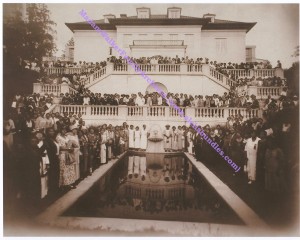
Madam Walker died at Villa Lewaro–her Irvington, NY mansion–in May 1919 (Madam Walker Family Archives http://www.aleliabundles.com)
We are thrilled to announce that Villa Lewaro, Madam C. J. Walker’s Irvington, New York estate, has been named a National Treasure by the National Trust for Historic Preservation.
Many thanks to Brent Leggs, to Harold and Helena Doley (the owners and stewards of the home), and to our friends at the National Trust and the Rockefeller Brothers Fund, who have helped make this possible.
To learn more, please visit the Villa Lewaro page on the National Trust’s website and the website of A’Lelia Bundles, Madam Walker’s great-great-granddaughter, biographer and president of the Madam Walker Family Archives.

Madam C. J. Walker circa 1912 (Madam Walker Family Archives http://www.aleliabundles.com)
Sarah Breedlove–who later would become known to the world as Madam C. J. Walker–was born on December 23, 1867, just two days before Christmas. The year had been a particularly difficult one for her parents, Owen and Minerva Anderson Breedlove, who struggled to farm the land as sharecroppers on the same Delta, Louisiana planation where they had been enslaved. That their first child to be born free after the Emancipation Proclamation should also enter the world during the Christmas season was a double blessing.

Sarah Breedlove was born in this Delta, Louisiana cabin on December 23, 1867 (Madam Walker Family Collection)
But the blessings soon turned to tragedy. Orphaned at seven, married at 14, widowed at 20 with a two year old daughter, it seemed that Sarah Breedlove McWilliams was destined to remain a poor, uneducated washerwoman.
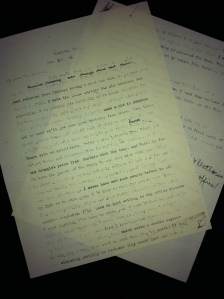
Madam Walker's November 8, 1916 letter to Atty. F. B. Ransom describes her visit with the Doctors Dumas in Natchez, MS (www.aleliabundles.com)
Combine clues in a faded letter from November 1916 with the algorithms of Facebook and the distance across the decades evaporates.
Finding descendants and relatives of people who knew my great-great-grandmother, Madam C. J. Walker, and her daughter, A’Lelia Walker, two decades ago when I was researching On Her Own Ground: The Life and Times of Madam C. J. Walker often was a hit or miss proposition.
But even then–long before we had all the Internet tools we now take for granted–I had the sense that the ancestors were leading me to the interviews I did in the homes of surviving Harlem Renaissance icons Alberta Hunter, Dorothy West, Bruce Nugent and Geraldyn Dismond (later known as Jet’s society columnist, Gerri Major) and artist Romare Bearden, whose mother, Bessye Bearden, had been a close friend of A’Lelia Walker’s. Continue reading
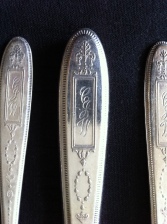 One of my earliest memories of my great-great-grandmother’s existence is seeing her monogram on the silverware we used everyday. “CJW” for “C. J. Walker,” the name Sarah Breedlove McWilliams adopted after marrying her third husband, Charles Joseph Walker.
One of my earliest memories of my great-great-grandmother’s existence is seeing her monogram on the silverware we used everyday. “CJW” for “C. J. Walker,” the name Sarah Breedlove McWilliams adopted after marrying her third husband, Charles Joseph Walker.
I grew up in a home surrounded by items that had belonged to Madam Walker–the early twentieth century hair care entrepreneur and philanthropist–and her daughter, A’Lelia Walker, who was to become an icon of the Harlem Renaissance. And ofcourse with a name like “A’Lelia,” there was an obvious connection since both my mother and I are named for Madam Walker’s daughter.
The china that we used on special occasions had been purchased by Madam Walker. The Chickering baby grand piano on which I learned to read music, had been in A’Lelia Walker’s 136th Street Harlem townhouse and Edgecombe Avenue pied-a-terre. And, yet, as a child I was never made to feel as if Madam Walker were the center of my universe or that I had any obligation to carry on or live up to a legacy. For that I can thank my late mother, who was wise enough to know that each generation must find its own passions and accomplishments.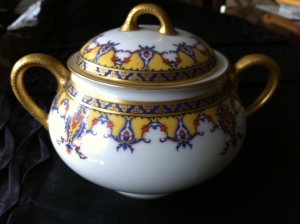
Today, as Walker’s biographer and only great-great-granddaughter, I am proud to honor her legacy as president of the Madam Walker Family Archives–the world’s largest private collection of Walker photographs, letters, business records, clothing, furniture and memorabilia–and as a board member of the Madam Walker Theatre Center, a National Historic Landmark in Indianapolis that once housed the original Madam C. J. Walker Manufacturing Company.
To read the full article go to “A Family Perpective: Celebrating Madam Walker’s Legacy” at http://www.aleliabundles.com/2011/09/22/a-family-perspective-celebrating-madam-walkers-legacy-2/ from her great-great-granddaughter A’Lelia Bundles’s blog at www.aleliabundles.com
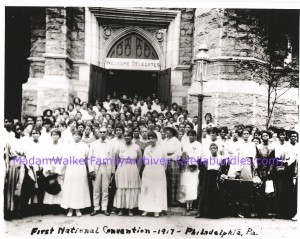
Madam Walker with her agents at the 1917 national Walker Beauty Culturist Convention in Philadelphia/Madam Walker Family Archives (aleliabundles.com)
On August 31, 1917, Madam C. J. Walker hosted the first national convention of her Walker “beauty culturists” at Philadelphia’s Union Baptist Church. More than 200 women from all over the United States gathered to learn about sales, marketing and management at what was one of the earliest professonal gatherings of American women entrepreneurs.
Walker–who founded her Madam C. J. Walker Manufacturing Company during the spring of 1906 in Denver after marrying her third husband, Charles Joseph “C.J.” Walker, earlier that year–had first begun selling hair care products in St. Continue reading
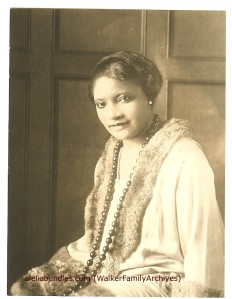
A'Lelia Walker wearing her favorite Chinese amber prayer beads (Madam Walker Family Archives/www.aleliabundles.com)
After a day of champagne, lobster and laughter with friends, A’Lelia Walker–my great-grandmother and daughter of entrepreneur, Madam C. J. Walker–died in a cottage near the beach in Long Branch, New Jersey. Her funeral–with music, poetry and great oratory–was as grand as her Harlem Renaissance era parties.
Hope you’ll enjoy my essay, “A’Lelia Walker’s Grand Harlem Funeral.”
Between friendship links on Facebook and research on Ancestry.com (which I’ve decided is Facebook for the dearly departed), I’ve been able to make connections and conduct a level of intimate research for my new book about my great-grandmother, A’Lelia Walker, that I couldn’t have dreamed of when I was writing On Her Own Ground: The Life and Times of Madam C. J. Walker.
A few days ago, a little nugget from 1910 about one of A’Lelia Walker’s friends led me to an article about a friend of hers named Ringgold. Such an unusual surname. So of course I thought of Faith Ringgold—artist, quilter, author, professor and mother of author Michele Wallace–and wondered if there were any connection. I couldn’t resist reaching out Continue reading
June 30, 2011: Secretary of the Interior Ken Salazar today announced that The Woodlawn Cemetery in The Bronx–where enterpreneur Madam C. J. Walker and her Harlem Renaissance arts patron daughter, A’Lelia Walker, are buried–has been designated a National Historic Landmark, the highest recognition accorded to the nation’s most historically significant properties.
There are two other National Historic Landmarks associated with the legacy of the Walker women: The Madam Walker Theatre Center, a cultural arts organization in Indianapolis, and Villa Lewaro, the home Madam Walker built in Irvington-on-Hudson, New York in 1918. Continue reading